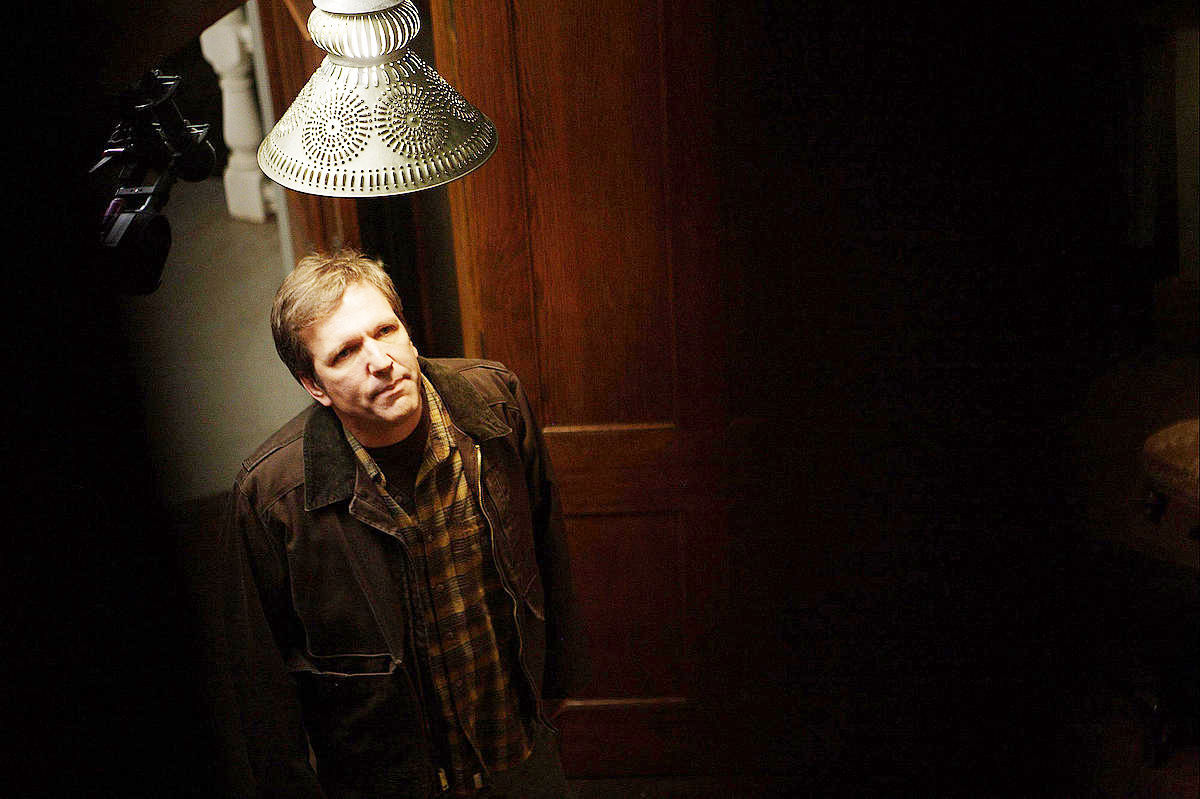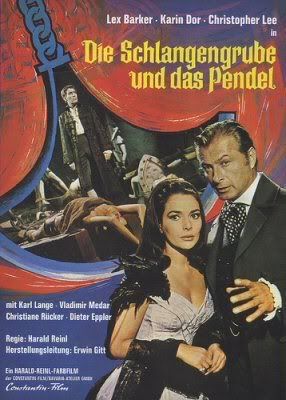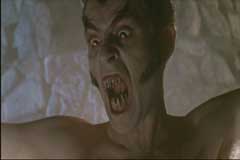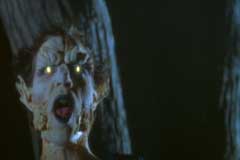Men Behind The Sun
by Tun Fei Mou

The year is 1945 and we’re brought to a squadron called 731, a branch of the Japanese military devoted to chemical weapons, germ warfare, and biological endurance for lack of a more accurate term. The Japanese have a whole slew of Chinese and Russian prisoners of war waiting to be used as guinea pigs. Dr. Shiro Ishii is the brains of the operation and there’s a good deal of pressure for him to get a few things right before Japan goes under. Ishii is one of those stern Japanese you constantly see in films by Americans, so dead set on his goal that human life is very much a means, not an end. He has already been relieved from this post once before for corruption so the pressure is stacked squarely on Shiro’s shoulders.
For the sake of training, several young boys have been sequestered to be placed in the youth corps. It seems that they had no choice in the matter as their parents were apparently all in tears when they left (this makes sense as no boy in the youth squadron is more than 13 years old). The boys are all prime candidates for brain washing as their all viscous little bastards. They single out a boy called Ishikawa as the brunt of their thuggishness right away, alienating him for the most of his stay at 731. Ishikawa isn’t the only one who the boys detest. Kawasaki, their brawny Sergeant, beats them all soundly at the slightest provocation and it isn’t long before the boys plan to get revenge.
An incident involving Kawasake leads to the true nature of what’s going on and what kind of film we’re about to watch. Kawasake tosses a bouncing ball out into a field when he catches Hashino, one of the youth corps boys, playing with it. Having brought it from home, Hashino isn’t about to let it sit out in a field, so he and some other boys attempt to get it back. The sentries find them and chase them through a nest of plague rats they’ve been keeping and then start shooting at Hashino with machine guns – he runs headlong into the electric fence and dies. The next day at assembly, Kawasaki calls it an ‘accident’ and then chides the other boys for acting like children when they mourn Hashino’s death. If Kawasake seems like a psychopath, wait until you hear what Shiro’s like when he’s in charge.
 Shiro’s lunacy is made perfectly clear when he hears that an underling criticized him to their superiors, citing his water purification system as one particular foul up. Shiro responds by making him piss into the purification system in front of the whole of 731 so that the doctor can drink it and prove him wrong. If that’s his idea of having the last laugh, just imagine how fucked the Chinese are. Before the experiments and intrigue begin, Ishikawa meets a mute Chinese boy in the woods who’s survived somehow. Ishikawa finds he has much more in common with the mute boy than any of his barbaric peers. And what kind of prison movie would it be without a few inmates planning an escape (unlike most prison films, they get precisely nowhere).
Shiro’s lunacy is made perfectly clear when he hears that an underling criticized him to their superiors, citing his water purification system as one particular foul up. Shiro responds by making him piss into the purification system in front of the whole of 731 so that the doctor can drink it and prove him wrong. If that’s his idea of having the last laugh, just imagine how fucked the Chinese are. Before the experiments and intrigue begin, Ishikawa meets a mute Chinese boy in the woods who’s survived somehow. Ishikawa finds he has much more in common with the mute boy than any of his barbaric peers. And what kind of prison movie would it be without a few inmates planning an escape (unlike most prison films, they get precisely nowhere).With the pieces in place, Shiro’s experiments begin. We learn that Shiro has his doctors perform live autopsies on prisoners given bubonic plague. At a nearby prison, we see a Chinese woman separated from her baby, which is then covered in snow by two guards. This is only the start of her mistreatment. Days later they find her cradling a pillow she thinks is her child. They take her to an icy field where she has ice water poured on her hands so that they’ll freeze; Shiro’s doctors pull her skin off in front of the youth corps leaving nothing but bones. The kids start to realize that they may never see their homes again. The experiments continue from there getting more and more intense and destructive. Shiro has an epiphany one day while visiting a whorehouse, one that he thinks he will go down in history for: a new kind of bomb made of ceramic that will spread infection with increased efficiency. Around this time, Kawasake asks Ishikawa to present a young boy for a test, assuring him good things will come of his cooperation. Not thinking, he brings his only friend, the mute Chinese boy. What happens next is ghastly; the boy is given a disease and then they perform an autopsy on him while he is under anesthetic. Ishikawa finally sees why succumbing to barbarism might have its upside if the right person is subjected to it. Before Shiro’s discovery can be tested (a planned test goes horribly awry after all the test subjects escape) Shiro gets word from the high command that he’s got to burn all evidence and close it down. Things aren’t going to end well.
Men Behind The Sun is going to live in infamy until human beings are no longer a species. I’m fairly certain about this. It’s too tasteless to be given legitimacy, covers too sensitive a subject to be given a remake, too polarizing to be given a region 1 DVD release by anyone with a brain in their head (Blue Underground’s more into films that people enjoy seeing, but their release of Goodbye, Uncle Tom keeps me awake at night so what do I know. Grindhouse Releasing might be crazy enough to do it. They gave Cannibal Holocaust a special edition, after all). The people have spoken and this film is infamous. I agree wholeheartedly that this movie is a pretty despicable trip, but there’s something about it that prevents me from writing it off. Like Cannibal Holocaust there’s a deadpan, almost mechanical presentation at work. That the film, like Ilsa, She Wolf of the SS, moves from icy fields to grey laboratories and basements makes the film consciously impossible to enjoy (not that I was trying particularly hard). T.F. Mou got his start directing worthless exploitation films for the Shaw Brothers that the big Internet consensus has deemed terrible. Having seen Men, I have no desire to see any of his earlier films and so take the masses’ word for it. Moving from exploitation to a film of this gravity (which also does it’s fare share of exploiting) is very different from Pier Pasolini moving from theoretical cinema to a film of this gravity as he did when he made Salò. When you move from exploitation films to historical films that feature so much exploitative content, there’s no way anyone’s going to take you seriously as anything other than a criminal. Men Behind The Sun is a slightly better movie than most people will have you believe, but that doesn’t protect it from its sins, which are many and horrible. If you had seen Men Behind The Sun in Chinese upon its release in 1988, you may have been able to take it seriously as those at the premiere of Cannibal Holocaust may have done before Deodato was arrested. Now that its been relegated to its current status as internet rumour, its impossible to see it as anything other than a timebomb; one sits and waits and asks ‘when will the gore scenes get here?’ It’s tone and content prevent Men from being a straight-up horror film, and so the appearance of extreme gore makes it a difficult animal to identify, but the gore is plentiful and nasty and it makes an already difficult film just about unbearable and yet I found myself less tempted to look away than I had prepared to be.
 Here’s why people get especially riled up about Men Behind The Sun: 731 was a real unit and they killed thousands of people. The Japanese were notorious bastards to the Chinese and Russians during World War II. They’re cruelty is legendary and hideous and 731 marks the high (or low) point of that cruelty. They performed live vivisections, gave people syphilis, gonorrhea, and bubonic plague, removed organs from live subjects, removed limbs and switched them left for right, and tested all manner of germ-based and chemical weapons on people. The real Ishii was a megalomaniac interested in being the best (or worst) whatever the cost. He got into Germ warfare because of the attention researchers had gotten after the Japanese division shut down by the Geneva Convention in 1925. He approached work with a sick determination, knowing full well he was doing what he considered to be the opposite of god’s will. When the Japanese surrendered he fled and then went to work for America and was a key player in the Korean War. Thank you, Uncle Sam. We only deal with the best, right?
Here’s why people get especially riled up about Men Behind The Sun: 731 was a real unit and they killed thousands of people. The Japanese were notorious bastards to the Chinese and Russians during World War II. They’re cruelty is legendary and hideous and 731 marks the high (or low) point of that cruelty. They performed live vivisections, gave people syphilis, gonorrhea, and bubonic plague, removed organs from live subjects, removed limbs and switched them left for right, and tested all manner of germ-based and chemical weapons on people. The real Ishii was a megalomaniac interested in being the best (or worst) whatever the cost. He got into Germ warfare because of the attention researchers had gotten after the Japanese division shut down by the Geneva Convention in 1925. He approached work with a sick determination, knowing full well he was doing what he considered to be the opposite of god’s will. When the Japanese surrendered he fled and then went to work for America and was a key player in the Korean War. Thank you, Uncle Sam. We only deal with the best, right?For a Chinese director to tackle this subject made a certain kind of sense, as it was the Chinese who suffered the full brunt of 731’s sadistic work. However, Mou fell into the same trap that Franco Prosperi and Gualtiero Jacopeti fell into and that was making a film whose monstrousness outweighs its supposed message. Men Behind The Sun has a terrifying edge to it, given to it by its reliance on children as main characters and as both victims and perpetrators of violence. Where Mou loses his way is in his gore. His fake stuff had some real kick to it (the scene in the pressure chamber, the aftermath of the bombs, the ice testing, despite its obvious fakery. Seriously I’ve never been as sickened by what I knew to be fake skeletal hands) but when the film was released Mou insisted that he had used real autopsy footage when the mute Chinese boy is given plague and then examined. I’m inclined to believe him because he also filmed a real cat being eaten by rats for no reason and it isn’t really a stretch to think he could do both. Men Behind The Sun thus becomes a film marred by its directors need to shock and it and Mou are unforgivable for that reason. Animals should never die for the sake of entertainment, nor should the dead be treated with such disrespect.
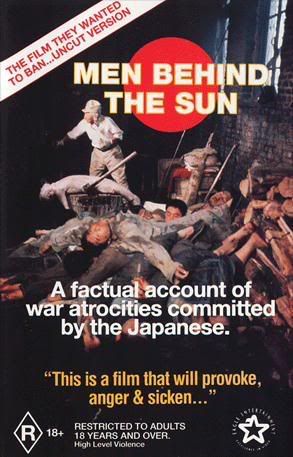 Maybe if Mou hadn’t bragged about his vileness to the press, he’d still be making movies today. In my opinion, there’s enough misery and violence in the world without people like Mou blending the line between fact and fiction. Now, like it or not he’s a whisper on the corridors of blogs with one dark, depressing film that he’ll always be remembered for.
Maybe if Mou hadn’t bragged about his vileness to the press, he’d still be making movies today. In my opinion, there’s enough misery and violence in the world without people like Mou blending the line between fact and fiction. Now, like it or not he’s a whisper on the corridors of blogs with one dark, depressing film that he’ll always be remembered for.

